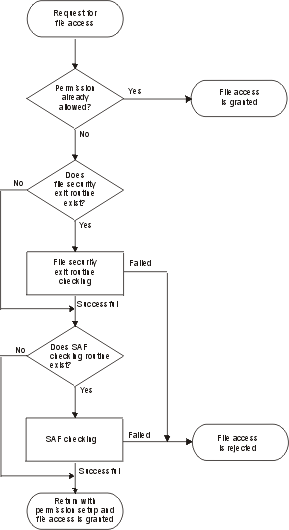 z/OS Network File System Guide and Reference
z/OS Network File System Guide and Reference
 z/OS Network File System Guide and Reference
z/OS Network File System Guide and Reference
|
Previous topic |
Next topic |
Contents |
Contact z/OS |
Library |
PDF
File security installation-wide exit z/OS Network File System Guide and Reference SC23-6883-00 |
|
|
The file security installation-wide exit routine verifies that a user is authorized to access a data set or data set member with the access mode requested. If the request from allocation, write, read, or access does not have permissions set up, then the exit routine gets control. This exit applies only to MVS data set access, not to z/OS UNIX file access. The permissions set up by the file security exit can be overridden by the SAF checking. If the exits allow access and there is no SAF checking, the permissions remain in effect until logout. The server does not call again for the same access before logout. The server gets the access mode or permissions before any of the other three types of calls. If security(saf) or security(safexp) is specified in the attributes table and the exit routine exists, this exit routine gets control first, and then SAF security checking gets control. If the exit routines fail the request, the entire request fails. If the exit routines process the request successfully, then the request is processed by the SAF checking. Similarly, if the SAF checking fails the request, the entire request fails. If the SAF checking is successful, the file permissions from the SAF checking are set up for the request. If neither security(saf) nor security(safexp) is specified in the attributes table and the exit routine exists, this exit routine determines the permissions. Figure 1 shows the logic flow determining which file security checking routines are used. Figure 1. Determining
which file security checking routines are used
 The file security installation-wide exit uses the parameter list
which is used by the server installation-wide exit. This exit is called
for at these times.
A return code is set by the installation-wide exit indicating whether the request is allowed. The file security installation-wide exit is not called at server startup or shutdown. 


|
 Copyright IBM Corporation 1990, 2014 Copyright IBM Corporation 1990, 2014 |